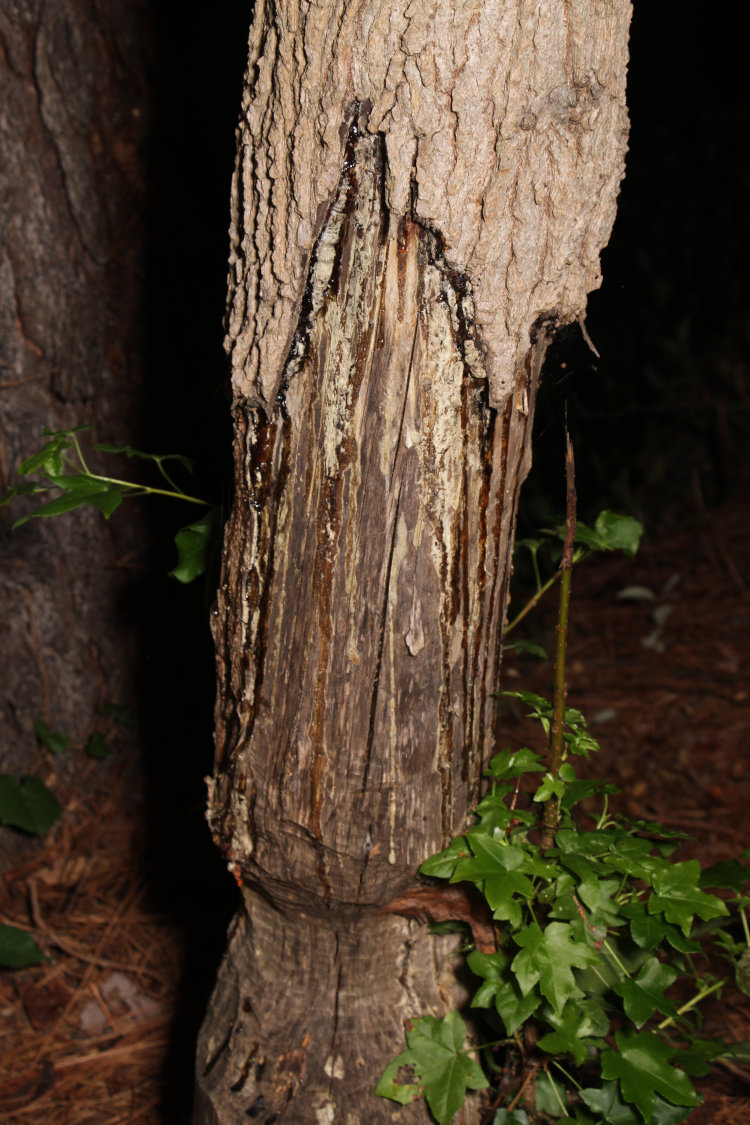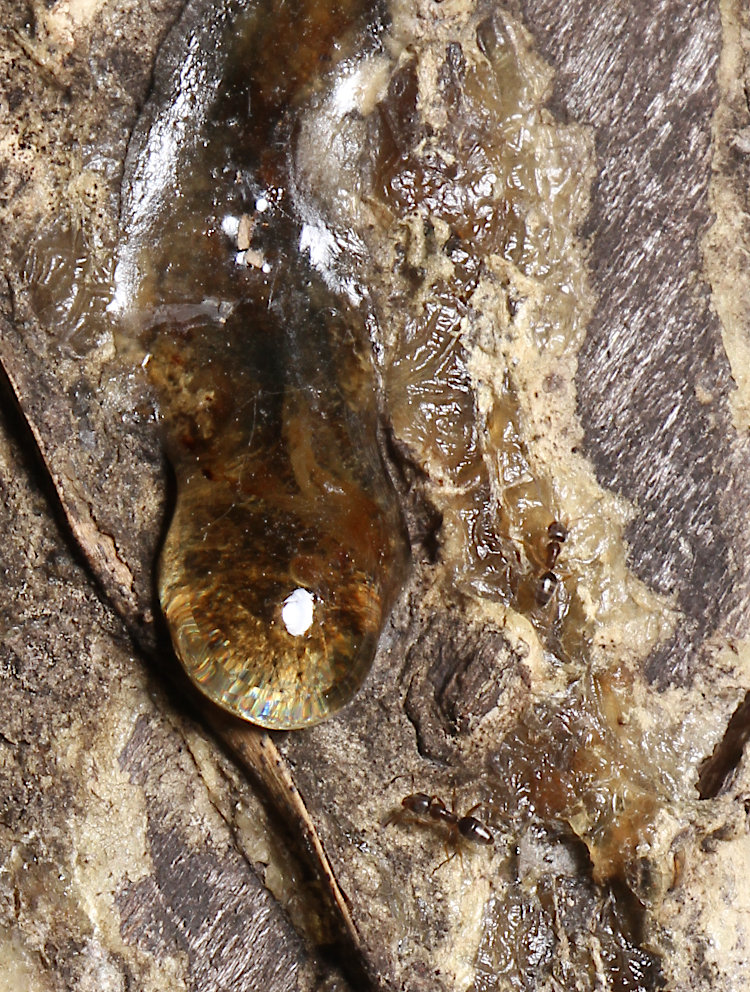That’s a phrase that I’m hoping will catch on – do your part, okay?
Naturally, the full phrase is more along the lines of, “Thank beavers for our knowledge of prehistoric arthropods,” or at least some of it – they almost certainly helped. Though it was likely the evolutionary precursors to beavers. And anything else that might have done the same kind of damage to the trees of the time.
This deep insight was prompted by seeing sights like this (including this very one) while checking out the neighborhood pond the other night:

While there was evidence very early this year of a single beaver in the pond, that one apparently didn’t stay long, and I’m familiar enough with the trees surrounding the pond to know that this bark damage occurred two years ago. Nonetheless, the resin was running quite distinctly from these yet-unhealed wounds – if resin can be said to ‘run’ and not ‘ooze infinitesimally slowly.’
[A quick note: sap feeds the inner tissues of the tree and is quite thin, only fractionally less so than water, while resin erupts from the bark and helps protect damaged areas from infestation, and is the consistency of almost-dried glue.]
But resin has the curious property that, once it’s buried in the right conditions, it continues to harden and can weather out millions of years as almost a gemstone, where we actually get ‘amber’ from. And amber, as anyone that knows their Jurassic Park can tell you, is where we get the detailed preserved bodies of arthropods of the time period when the resin was oozing.

I could not see any movement from the resin while I was there focusing, but the two ants (and many more) were noticeably active – no such luck in watching them get stuck for posterity. And I spot-checked a few other areas, but couldn’t find an example of a trapped insect. Nonetheless, it happens often enough to have given us a better record of arthropod species running millions of years back than we have of any other class on the planet. And it preserves them better than any other method of fossilization, too, since the exchange of moisture and the actions of microbes virtually cease when the subject is encapsulated. But it couldn’t happen without damage to tree bark in the first place, so thank the prehistoric equivalent of beavers, and bears, and deer perhaps – anything that can get the resin running. And you can thank clumsy insects too if you like, but that doesn’t roll off the tongue the same way.
* * *
A quick note if you’re like me and would like to have a genuine amber fossil yourself: the market is absolutely brimming with fakes, and you’re almost certainly not going to find a genuine one for less than a few hundred dollars. There are some simple tests that you can do to detect them, but of course, only if you can lay your hands on it, so online purchases are ruled out unless you can authenticate the source quite thoroughly. But even a cursory examination can reveal a fake; arthropods trapped in resin are stuck fast, usually by a leg or three, struggle, and gradually get rolled over and encapsulated. They are almost never in ‘good’ condition from all this, and usually share the amber with whatever debris also gets snagged in that time. If you’re seeing a nice, clean (and recognizable) mantis species in an action pose with little to obscure it? It’s more fake than Faux News, though considerably easier to digest. And yes, I found this out before dropping any money on such examples, and still don’t have a genuine one either. But feel free to send one along, you know, in appreciation of all the stunning content here…



















































